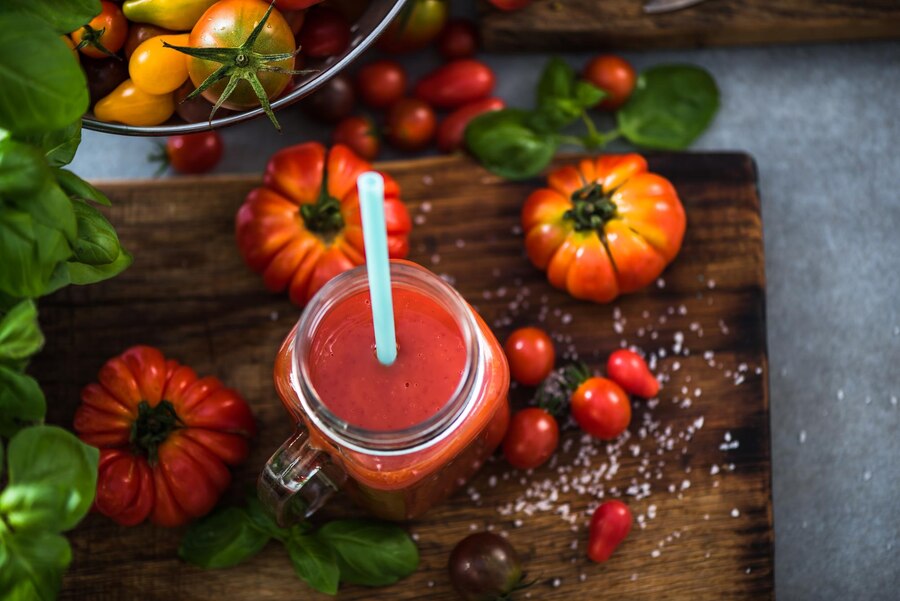Ketchup. It’s that ubiquitous red condiment found in almost every kitchen around the world. Whether you’re dunking fries, dressing a burger, or spicing up a hot dog, ketchup is a staple that has earned a beloved place in our hearts and on our plates. But how much do you really know about this tangy sauce? Let’s dive into the rich history, diverse types, and surprising uses of ketchup.
History of Ketchup
Believe it or not, ketchup’s roots trace back to Asia. The original “kê-tsiap” was a fermented fish sauce from Southeast Asia, brought to Europe by British traders in the 17th century. Early recipes varied widely and included ingredients like mushrooms, walnuts, and even oysters.
Evolution of the Recipe
As ketchup traveled through time and geography, it evolved. By the early 19th century, tomato ketchup became the standard, thanks to its preservation qualities and the abundant supply of tomatoes. Sugar and vinegar were added, creating the sweet and tangy balance we recognize today.
Ketchup in Modern Times
Today, ketchup is a billion-dollar industry with countless varieties available. From the classic tomato to gourmet flavors, ketchup has become more than just a condiment – it’s a culinary phenomenon.
Ingredients in Ketchup
At its core, ketchup is made from tomatoes, vinegar, sugar, salt, and spices. The simplicity of these ingredients belies the complex flavor profile that has made ketchup a favorite worldwide.
Health Benefits and Concerns
Tomatoes are rich in antioxidants, particularly lycopene, which has numerous health benefits. However, ketchup can also be high in sugar and salt, making moderation key. Some brands now offer low-sugar and low-salt alternatives to cater to health-conscious consumers.
Tomato Ketchup
The most common type, tomato ketchup, is a pantry staple. It pairs well with almost anything and is the baseline by which other ketchups are measured.
Specialty Flavors
From spicy Sriracha ketchup to smoky chipotle, there’s a flavor for every palate. These specialty ketchups can add a unique twist to traditional dishes.
Organic and Homemade Options
For those who prefer a more natural option, organic and homemade ketchups are available. These versions often skip the preservatives and artificial ingredients, providing a purer taste.
Industrial Manufacturing
Ketchup production on an industrial scale involves blending pureed tomatoes with vinegar, sugar, and spices, then cooking the mixture until it reaches the desired consistency. It’s then pasteurized and bottled for shelf stability.
Homemade Ketchup Recipe
Making ketchup at home is surprisingly easy. Combine tomatoes, vinegar, sugar, and your choice of spices, then simmer until thick. Blend until smooth, and you’ve got homemade ketchup free from preservatives.
Ketchup as a Condiment
Classic pairings like fries and burgers aside, ketchup is incredibly versatile. It’s used as a base for BBQ sauce, a topping for meatloaf, and even mixed with mayonnaise for a quick dip.
Ketchup in Recipes
Ketchup can be a secret ingredient in many recipes, adding depth and sweetness to stews, soups, and marinades. Its umami-rich flavor enhances dishes in unexpected ways.
Unusual Uses of Ketchup
Did you know ketchup can clean copper pots or remove tarnish from silverware? Its acidity makes it a surprisingly effective cleaning agent!
Ketchup Variations by Country
Each country puts its spin on ketchup. In the Philippines, banana ketchup is popular, while in Japan, ketchup is often used as a base for sauces in dishes like omurice (omelet rice).
Popular Brands Internationally
Heinz may dominate in the U.S., but globally, brands like Maggi and Del Monte also have a strong presence. Each brand offers unique regional flavors that cater to local tastes.
Nutritional Breakdown
A tablespoon of ketchup typically contains around 20 calories, 5 grams of sugar, and 160 milligrams of sodium. While it’s low in calories, the sugar and salt content can add up.
Comparing Different Brands
When choosing ketchup, it pays to compare labels. Organic and health-focused brands often have lower sugar and salt levels, providing a healthier option without sacrificing taste.
Common Myths
One common myth is that ketchup was originally a medicine. While it has never been a cure-all, its high vitamin content does offer some health benefits.
Surprising Facts
Did you know that 97% of American households have a bottle of ketchup? Or that astronauts use a thicker version of ketchup in space to avoid messes?
Iconic Moments
From the “slow ketchup” ads of the ’70s to the infamous scene in “Pulp Fiction,” ketchup has made its mark on pop culture. Its unmistakable red hue is instantly recognizable.
Ketchup in Media and Advertising
Ketchup advertising has always been innovative, from Heinz’s “57 Varieties” to modern campaigns focusing on natural ingredients and sustainability.
Sustainability Concerns
The production of tomatoes, especially in large quantities, can strain water resources and contribute to pesticide use. Sustainable farming practices and organic farming can help mitigate these impacts.
Eco-Friendly Alternatives
Some companies are exploring eco-friendly packaging options, such as biodegradable bottles and reduced plastic use, to lessen ketchup’s environmental footprint.
New Flavors
The world of ketchup is expanding with exotic flavors like truffle, curry, and even fruit-infused varieties. These innovations cater to adventurous eaters looking for something new.
Packaging Innovations
From squeezable bottles to single-serve packets, ketchup packaging has come a long way. Recent innovations include recyclable and refillable containers, reflecting a growing trend towards sustainability.
Best Foods to Pair with Ketchup
Besides the obvious fries and burgers, ketchup pairs wonderfully with scrambled eggs, grilled cheese, and even mac and cheese. Its versatility is truly remarkable.
Beverage Pairings
While it might seem unconventional, ketchup pairs surprisingly well with certain beverages. A Bloody Mary, for instance, benefits from a splash of ketchup for added depth.
Shelf Life
Unopened, a bottle of ketchup can last up to two years. Once opened, it should be refrigerated and used within six months for the best flavor and freshness.
Tips for Prolonging Freshness

To keep your ketchup fresh, always store it in a cool, dark place and ensure the cap is tightly closed. Refrigeration is key once the bottle is opened.
Conclusion
Ketchup is more than just a condiment; it’s a culinary icon with a rich history and endless possibilities. From its humble beginnings to its status as a global staple, ketchup continues to evolve and delight. Whether you’re a traditionalist who sticks to the classic tomato version or an adventurous foodie exploring new flavors, there’s a ketchup out there for everyone.
